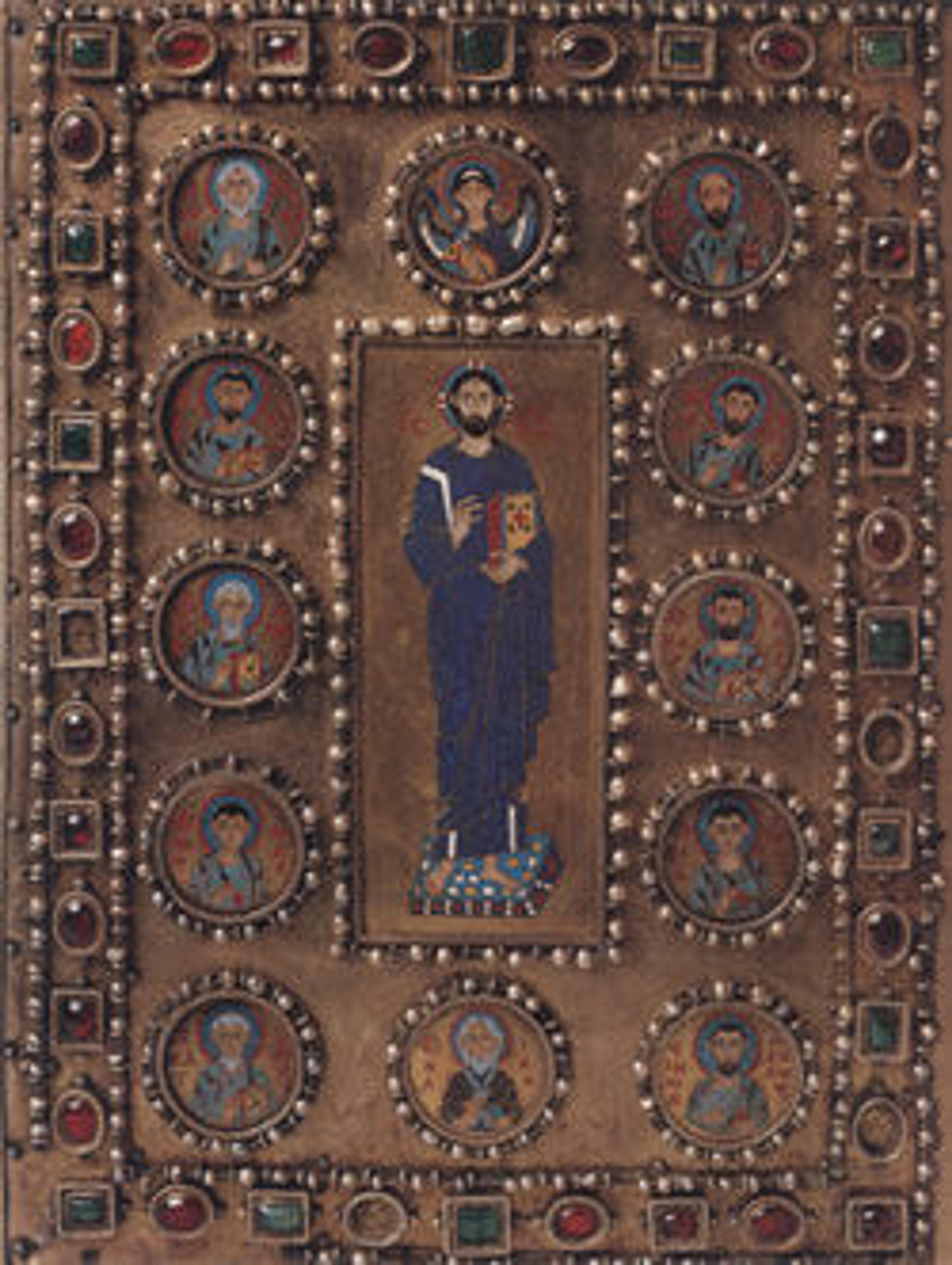Circular Box (Pyxis) with the Miracle of Christ’s Multiplication of the Loaves
In this depiction of the Miracle of the Loaves (Mark 8:1–6), an enthroned Christ is flanked by Saints Peter and Paul. Other disciples carry the loaves of bread he has miraculously produced to feed the multitude, loaves that the early church associated with the bread of the Eucharist. It is possible that containers like this were used in connection with the Divine Liturgy.
Artwork Details
- Title:Circular Box (Pyxis) with the Miracle of Christ’s Multiplication of the Loaves
- Date:6th century
- Geography:Made in Spain (lid); Made in North Africa (box)
- Culture:Byzantine
- Medium:Elephant ivory with polychromy
- Dimensions:Overall (with lid): 3 1/2 x 4 3/8 x 5 1/2 in. (8.9 x 11.1 x 14 cm)
Overall (without lid): 3 x 4 1/4 x 5 1/4 in. (7.6 x 10.8 x 13.3 cm)
Top: 1/2 x 4 3/8 x 5 1/2 in. (1.3 x 11.1 x 14 cm) - Classification:Ivories-Elephant
- Credit Line:Gift of J. Pierpont Morgan, 1917
- Object Number:17.190.34a, b
- Curatorial Department: Medieval Art and The Cloisters
More Artwork
Research Resources
The Met provides unparalleled resources for research and welcomes an international community of students and scholars. The Met's Open Access API is where creators and researchers can connect to the The Met collection. Open Access data and public domain images are available for unrestricted commercial and noncommercial use without permission or fee.
To request images under copyright and other restrictions, please use this Image Request form.
Feedback
We continue to research and examine historical and cultural context for objects in The Met collection. If you have comments or questions about this object record, please contact us using the form below. The Museum looks forward to receiving your comments.
